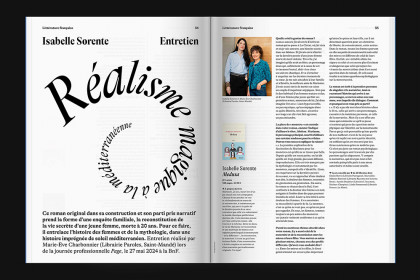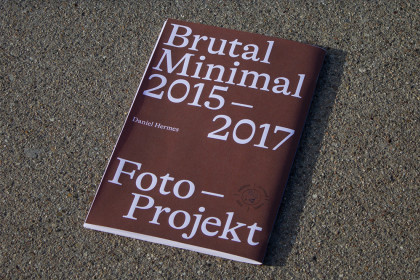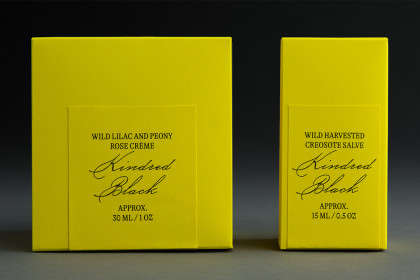GT Alpina
Family overview
- Condensed
- Thin Italic
- Light Italic
- Regular Italic
- Medium Italic
- Bold Italic
- Standard
- Thin Italic
- Light Italic
- Regular Italic
- Medium Italic
- Bold Italic
- Extended
- Thin Italic
- Light Italic
- Regular Italic
- Medium Italic
- Bold Italic
- Fine Condensed
- Thin Italic
- Light Italic
- Regular Italic
- Medium Italic
- Bold Italic
- Fine Standard
- Thin Italic
- Light Italic
- Regular Italic
- Medium Italic
- Bold Italic
- Fine Extended
- Thin Italic
- Light Italic
- Regular Italic
- Medium Italic
- Bold Italic
- Typewriter
- Thin Italic
- Light Italic
- Regular Italic
- Medium Italic
- Bold Italic
Subfamilies
- Standard ThinPaid $20 to get in. Didn’t even get to touch lava!????
- Standard Thin ItalicThe Alps are a crescent shaped geographic feature of central Europe that ranges in an 800 km arc from east to west and is 200 km in width
- Standard LightToo tall, and very cold! ⭑⭒⭒⭒⭒
- Standard Light ItalicA mountain? Pffff, boooring! It could have been whiter as well… calls itself Mont Blanc, what a joke ⭑⭒⭒⭒⭒
- Standard RegularToday, the Indian plate continues to be driven horizontally at the Tibetan Plateau, which forces the plateau to continue to move upwards.
- Standard Regular ItalicMont Blanc 4,810 m (15,781 ft), Monte Rosa 4,634 m (15,203 ft), Dom 4,545 m (14,911 ft), Weisshorn 4,506 m (14,783 ft), Matterhorn 4,478 m (14,692 ft)
- Standard MediumThe English word Alps derives from the Latin Alpes (through French).
- Standard Medium Italic1:50.000 Since 1994, routes are coloured on these maps. It is marketed as for hikers, Alpinists, cyclists, planners, tourists and explorers.
- Standard BoldIn 1856 Andrew Waugh announced Everest (then known as Peak XV) as 8,840 m (29,002 ft) high
- Standard Bold ItalicRoch was born near Geneva, Switzerland in 1906, the son of an academic physician who would later become the president of the University of Geneva.
- Settings
Typeface information
GT Alpina proudly calls itself a workhorse serif, but delights in playing with the very meaning of that concept. It reaches into the grab bag of typographic history to resurrect shapes some may falsely see as too expressive, resulting in a meticulous family melding these distinct shapes with a pragmatic execution.
Typeface features
OpenType features enable smart typography. You can use these features in most Desktop applications, on the web, and in your mobile apps. Each typeface contains different features. Below are the most important features included in GT Alpina’s fonts:
- SS01
- Alternate J
Jungfrau
- SS02
- Alternate ?
¿Ascensión?
- SS03
- Alternate &
Piz & Palü
- SS04
- Alternate @
M@terhorn
- ONUM
- Oldstyle Figures
0123456789
- SMCP
- Small Caps
Greina Pass
Typeface Minisite
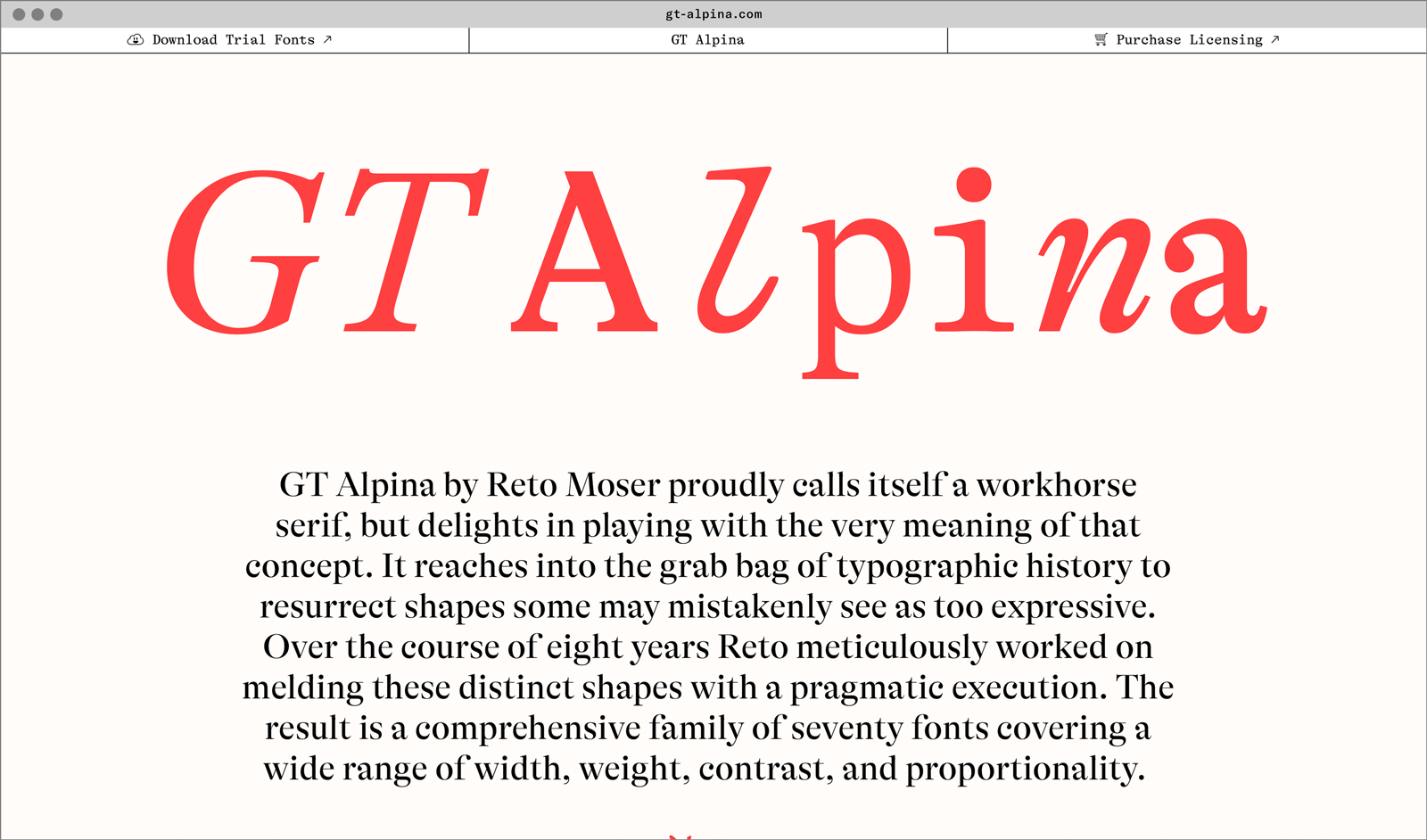
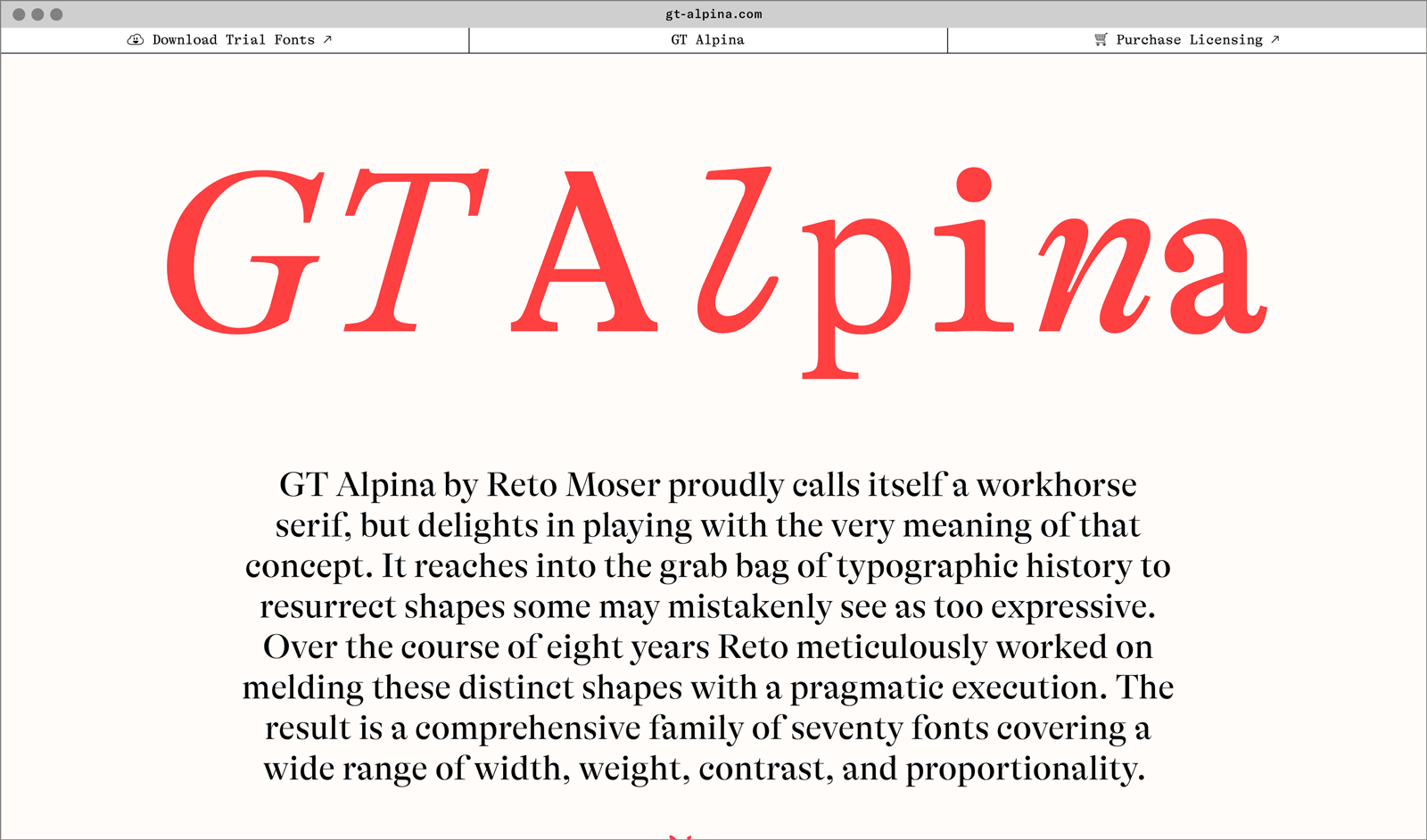
- Visit the GT Alpina minisite to discover more about the typeface family’s history and design concept.
GT Alpina in use



